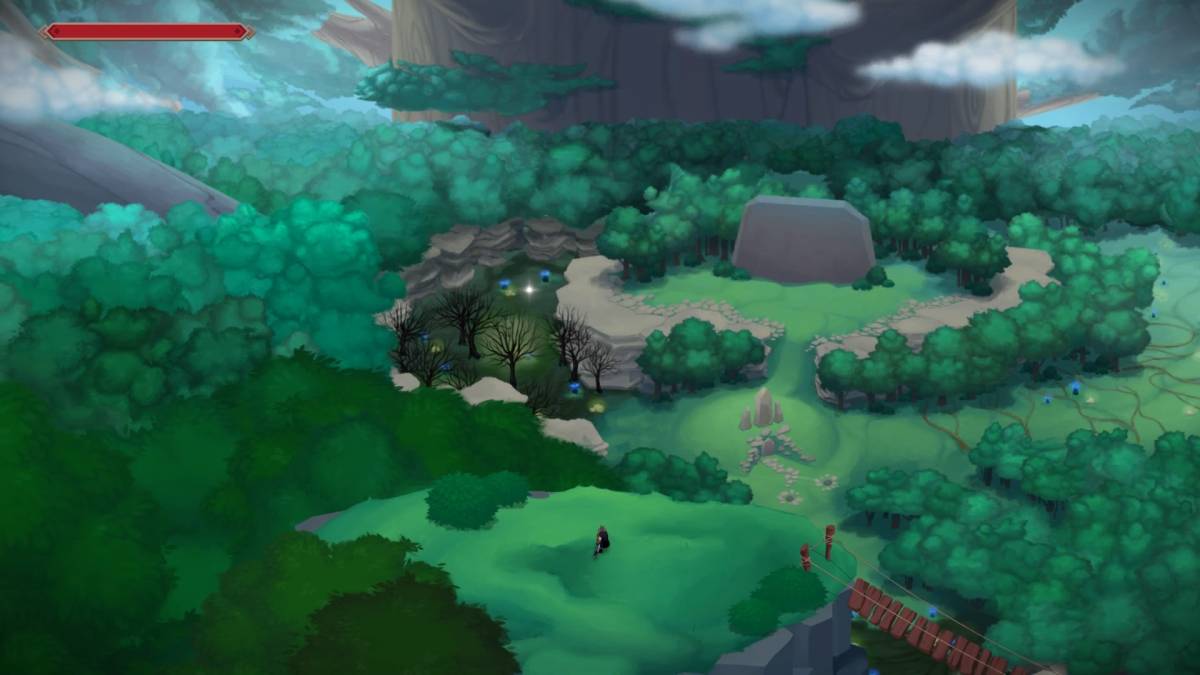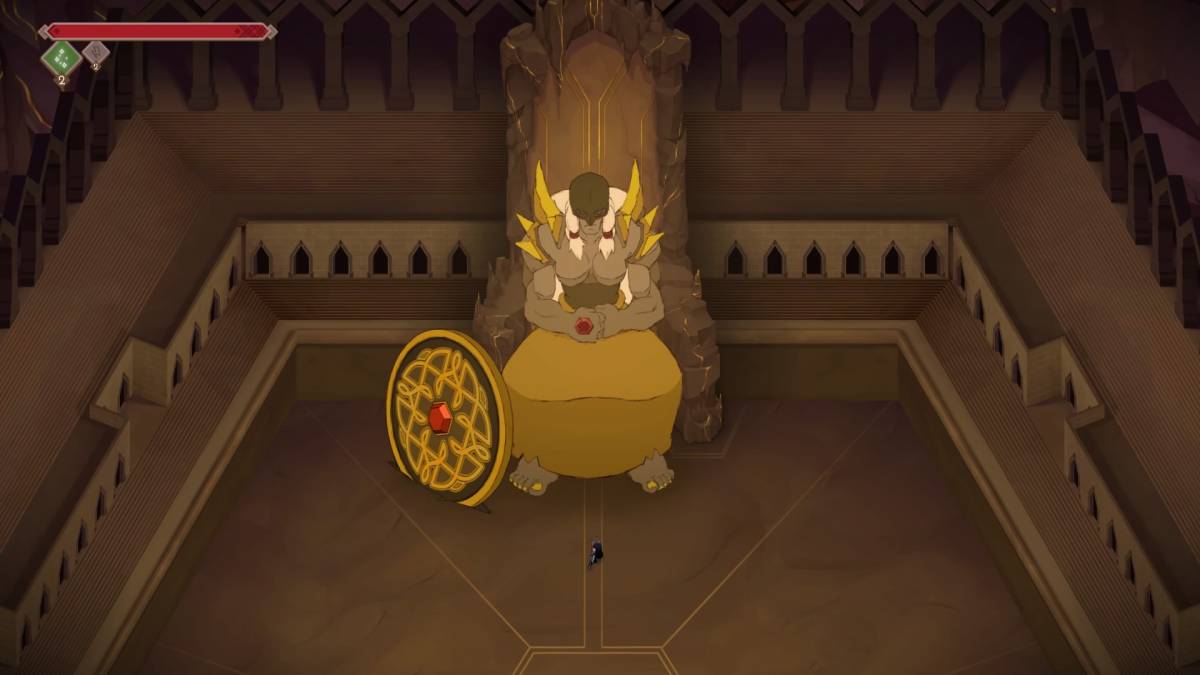It takes a lot to sell me on a game before I’ve even played it or read up on the critical consensus. Before its Valhalla Edition was revealed at E3 2016 for consoles, Jotun was something that had completely slipped me by when it was initially released on PC. Once I watched that trailer and found myself sucked into its world and all the mythos that came with it, I knew it would be one to watch out for.
And I wasn’t wrong.

If you want a simple review of Jotun, here it is: Dark Souls meet Shadow of the Colossus styled like your favourite eighties cartoon. To give such a simple summary for such a simple game doesn’t do Jotun any justice, though: it’s infinitely more complex than what you see on its surface.
Playing as Thora, a female viking warrior who is killed after being cast off her boat, you must traverse dangerous limbo-esque lands to take on the Jotun, the Titans of Norse mythology. Your only chance of reaching Valhalla and the warrior’s end that you deserve is to axe your way through an endless sea of foes and hope that you impress the Gods enough for passage. Basically, Thora has had a very bad day.

The story is told impeccably well, which isn’t something that I am going to spoil, but let’s just say that Thora doesn’t have an easy time of it. The driving force behind the narrative comes from the perfect Icelandic voice performance for Thora. Thunder Lotus deserve a lot of credit for sticking to authenticity over a localised voiceover and it really does pay off for them and also the player. It’s a rare thing to find a developer who’s done their homework and to then see that same passion reflected in something as divisive as a video game. Although I am absolutely certain that I won’t commit to it for more than an hour, it looks like I might have to add a new course to Duolingo.
After losing track of the regularity at which I fell to a particularly bastardly boss, it feels like her struggle becomes your own as you choke back the swear words and temptation to curse the Gods. Despite its hand-drawn art style, which is at times jaw-dropping, by the way, Jotun is not a game for kids – it may even prove too much for a lot of adults. If you have three or four hours spare and are good at adapting to challenges, Jotun could be the perfect game for you. There’s a clear strategy for climbing over every stumbling block the game throws at you, but whether you have enough patience to seem through is ultimately down to you.

The difficulty in Thunder Lotus’ game comes from how almost embarrassingly under-equipped you are throughout. It’s just you, an axe, the occasional gifts from the Gods, and gigantic, often unnerving bosses for company throughout its short playtime. Don’t misconstrue that as a criticism, however: sometimes simpler is better. Melee involves one of two buttons – press one for a regular attack and hold the other for a heavy attack, perfect for crowd dispersal or a killing blow on a boss. There are no convoluted combos here, just one woman and her need to swing an axe until everything is dead. It’s glorious.
As well as being kind enough to offer you a second chance to reach Valhalla, the Gods will also grant you power-ups to use throughout, which all need to be replenished at wells whenever you can. Frigg, the healing gift, should almost be a button of its own as you will look away for a second and be left with less than a quarter of your bar on more than a few occasions. Two of my other most used are Thor, which allows you to call down Mjolnir, and Loki, which creates a decoy that explodes after a certain period of time. When you’re in the heat of battle, balancing all of the power-ups to use at the correct times is almost an art in of itself. It isn’t made any better than the system on console is hardly perfect, asking you to press a button to scroll through the collection and then another button to use it. Perhaps my tired brain is more to blame for this than a design flaw, but it didn’t work well for me. A scene from Zoolander also best describes how unsuitable the map is for a game of Jotun’s grandeur, but that’s a minor quibble – exploration is always better without a gigantic arrow telling you where to go at all times.

Backtracking is commonplace in Jotun, constantly asking you to revisit areas with essential goodies that you may have missed. Next to paid DLC reminders within pause menus, backtracking is something in gaming that I can almost never abide – a game should always be driving itself forwards, not asking you to slow down by returning to places you’ve already been. Jotun’s narrative is so strong, so damn interesting that the backtracking seems to be trying its damnedest to bring you out of it. Considering how painstakingly the landscapes of Jotun were created and how magnificent the results are, perhaps indulgence from the developers forcing you to revisit areas can be given a pass.
Any other flaws that Jotun has are also quickly forgotten once the latest boss has been bested or you’ve stumble across yet another gorgeous sight. Compliment those with a beautifully simplistic combat system, a sense of challenge and scope far beyond what games with countless multiples of its budget can muster, and a sincere passion shining through its every pore and you have a dark horse for one of the best games of the year. Well, it’s technically from 2015 if we’re being strict, but I am willing to let it go if you are. Jotun would be a phenomenal game no matter the year.
Some of the coverage you find on Cultured Vultures contains affiliate links, which provide us with small commissions based on purchases made from visiting our site.

